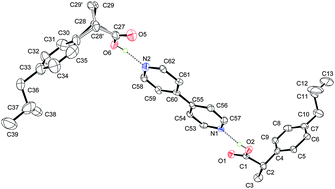Chiral co-crystal solid solution: structures, melting point phase diagram, and chiral enrichment of (ibuprofen)2(4,4-dipyridyl)†
Abstract
Crystal engineering of

* Corresponding authors
a Solid State Chemistry, Global Pharmaceutical R&D, Abbott Laboratories, 1401 Sheridan Rd., North Chicago, IL, USA
b
Solid State Sciences, Global Pharmaceutical R&D, Abbott Laboratories, 1401 Sheridan Rd., North Chicago, IL, USA
E-mail:
geoff.gz.zhang@abbott.com
Fax: +1 847 9384434
Tel: +1 847 9374702
c School of Pharmacy, University of Wisconsin-Madison, Madison, WI, USA
d Structural Chemistry, Global Pharmaceutical R&D, Abbott Laboratories, 100 Abbott Park Road, Abbott Park, IL, USA
Crystal engineering of

 Please wait while we load your content...
Something went wrong. Try again?
Please wait while we load your content...
Something went wrong. Try again?
S. Chen, H. Xi, R. F. Henry, I. Marsden and G. G. Z. Zhang, CrystEngComm, 2010, 12, 1485 DOI: 10.1039/B910662F
To request permission to reproduce material from this article, please go to the Copyright Clearance Center request page.
If you are an author contributing to an RSC publication, you do not need to request permission provided correct acknowledgement is given.
If you are the author of this article, you do not need to request permission to reproduce figures and diagrams provided correct acknowledgement is given. If you want to reproduce the whole article in a third-party publication (excluding your thesis/dissertation for which permission is not required) please go to the Copyright Clearance Center request page.
Read more about how to correctly acknowledge RSC content.
 Fetching data from CrossRef.
Fetching data from CrossRef.
This may take some time to load.
Loading related content
